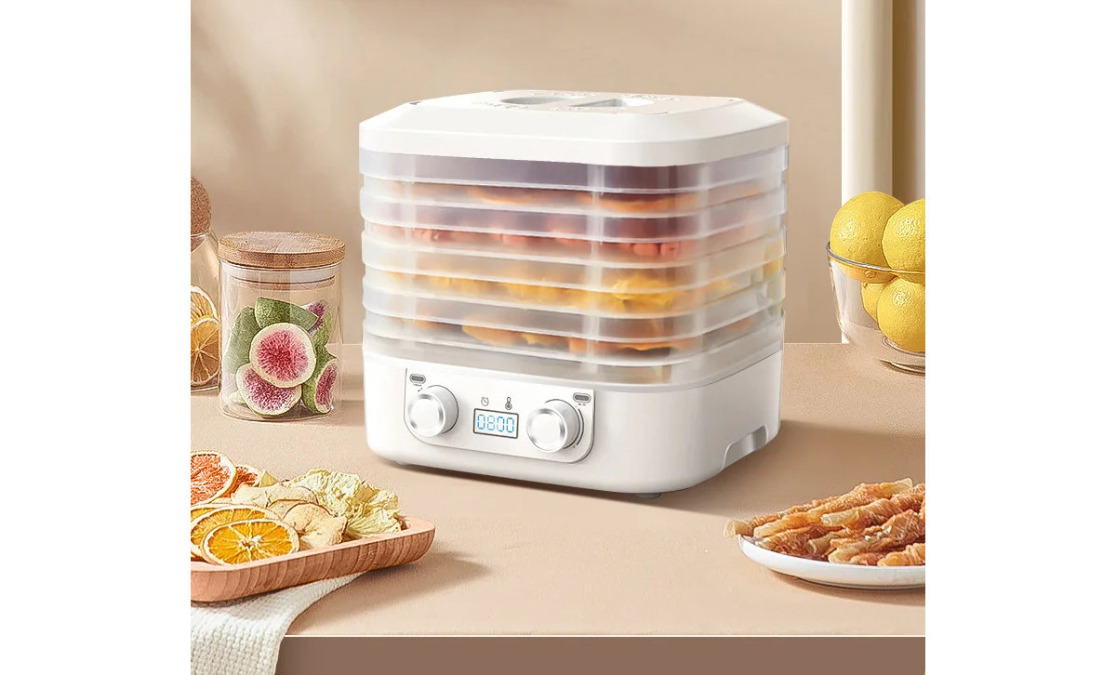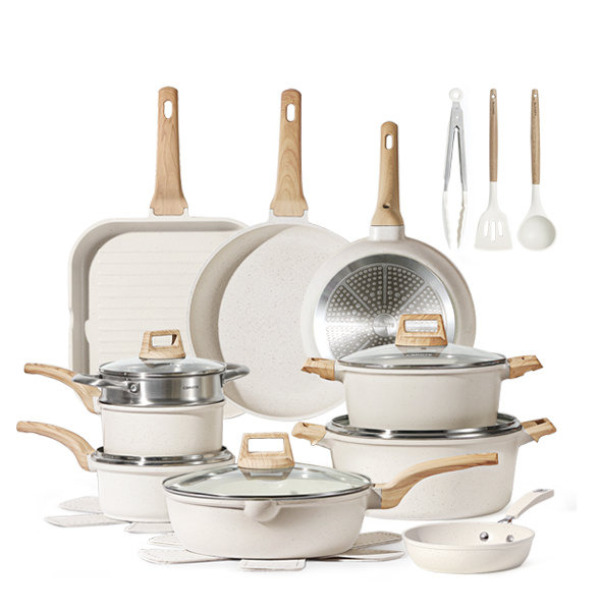Fruit Vegetables Herb Drying Machine, Dried Fruit Vegetables Herb Drying Machine Household MINI Food Dehydrator

Making dried fruits, vegetables, and herbs at home can offer several benefits:
Control Over Ingredients: When you make dried fruits, vegetables, and herbs at home, you have complete control over the ingredients used. You can choose organic produce and avoid additives like sulfites or excessive sugar often found in store-bought dried fruits.
Preservation of Nutrients: Drying fruits, vegetables, and herbs at home allows you to preserve their nutrients more effectively compared to some commercial drying processes. You can control the temperature and drying time to minimize nutrient loss.
Cost-Effectiveness: Making dried foods at home can be more cost-effective in the long run, especially if you have access to fresh produce in bulk or from your garden. It can also be a great way to reduce food waste by preserving excess produce.
Customization: Homemade dried foods allow you to customize flavors and textures to suit your preferences. You can experiment with different seasonings and blends to create unique flavor profiles.
Healthier Snack Option: Homemade dried fruits, vegetables, and herbs can be a healthier alternative to store-bought snacks, as they often contain fewer additives and preservatives. They can be enjoyed as standalone snacks or used in recipes to add flavor and nutrition.
Longer Shelf Life: Properly dried and stored fruits, vegetables, and herbs have a longer shelf life compared to their fresh counterparts. This can help you have access to your favorite produce year-round and reduce trips to the grocery store.
Convenience: Having a supply of homemade dried foods on hand can provide convenient snacks or ingredients for cooking and baking. They are lightweight and portable, making them ideal for on-the-go snacking or adding to meals when camping or traveling.
Overall, making dried fruits, vegetables, and herbs at home allows you to enjoy the benefits of preserved produce while having control over the process and ingredients used. It's a rewarding and sustainable way to enjoy seasonal flavors throughout the year.



DMWD Fruit Vegetables Herb Drying Machine
Rated voltage: 110V220V
Rated frequency: 50-60Hz
Rated Power: 160W
Fruit tray material: Food grade PP
Numbers of the trays: 3 or 5
Timing period: 1-48 hours
Date published: 27 Apr. 2024
Vacuum Sealer Machine for Home Kitchen Use, VEVOR Commercial ready Vacuum Sealer Machine Multifunction Automatic Food Packaging

Vacuum sealer machines for home kitchen use work by removing air from specially designed bags or containers and then sealing them to preserve food freshness. Here's how they typically work: Prepare the Food: Place the food you want to store or... read more
Induction Kitchen Cooking Set, CAROTE Pots and Pans Set Nonstick, Cookware Set White Granite

Induction cooking works by using electromagnetic energy to directly heat pots and pans made of ferrous (iron-containing) materials. Here's how it works: Electromagnetic Induction: When you turn on an induction cooktop and place a compatible... read more
Anti-allergen Handheld Mattress Vacuum with UV & Ultrasonic, Jimmy WB73 Portable Vacuum Cleaner

Dust mites themselves don't directly affect the skin, but their feces and body fragments can trigger allergic reactions in some people. These allergic reactions can manifest as skin symptoms such as itching, redness, and inflammation. Dust mite... read more

 I found this product on aliexpress.com
I found this product on aliexpress.com